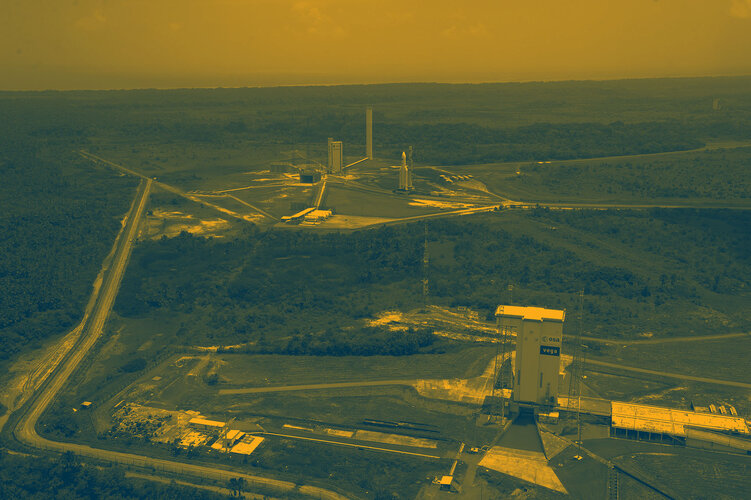Facts and figures
Launch
2030
Launcher
Vega-C/Vega-E
Launch site
Kourou, French Guiana
Orbit
Altitude of ~610 km; polar non-Sun-synchronous
Mission life
Five years (carries consumables for eight years)
Satellite
Prismatic-shaped platform with fixed solar panels, weighing ~1750 kg (including 150 kg fuel, allowing for re-entry to prevent space debris)
Power
1300 W
Instruments
Hyperspectral Imaging Spectrometer (HIS), which acquires Earth (plus Sun and Moon) samples across the whole spectral range, from ultraviolet to infrared (320–2400 nm), operated at –123°C
Cryogenic Solar Absolute Radiometer (CSAR), which operates at ~–210°C, measures solar radiation and serves as the ‘gold standard’ reference, traceable to SI-units
Onboard Calibration System, which shines solar light and beams of different wavelengths, generated by dispersing the solar light in a device called a solar polychromator, to the CSAR as a reference
Revisit time
61 days; six cycles per year to characterise the full diurnal cycle and seasonal variations over the whole globe
Mission control
ESA’s European Space Operations Centre (ESOC) in Darmstadt (DE) for the launch and early orbit phase; then a mission control centre in the UK (TBD)
Communication
One or two polar ground stations, for example, Svalbard (NO)/Kiruna (SE)
Operations & data processing
Data centre in the UK (TBD). ESA implements a free and open data access policy
Project and commissioning
Managed at ESA’s European Space Research and Technology Centre (ESTEC) in Noordwijk (NL)
Prime contractor
Airbus Defence and Space (UK)















 Germany
Germany
 Austria
Austria
 Belgium
Belgium
 Denmark
Denmark
 Spain
Spain
 Estonia
Estonia
 Finland
Finland
 France
France
 Greece
Greece
 Hungary
Hungary
 Ireland
Ireland
 Italy
Italy
 Luxembourg
Luxembourg
 Norway
Norway
 The Netherlands
The Netherlands
 Poland
Poland
 Portugal
Portugal
 Czechia
Czechia
 Romania
Romania
 United Kingdom
United Kingdom
 Slovenia
Slovenia
 Sweden
Sweden
 Switzerland
Switzerland


































